After several weeks of studying the best editorial sources and conducting our own research and testing, I’ve decided that if you need a humidifier, I’d recommend picking up the $180 Air-O-Swiss 7135—or the budget pick we have. Our main pick, however, is easy to use, safe, portable and importantly can deliver real levels of humidity controlled by timer or humidity level. Conveniently, it has a built in hygrostat (thermostat for humidity) that lets it autonomously maintain a high level of humidity in rooms up to 650 square feet in size.
Who should get a humidifier?
Dry air sucks. It can cause dry sinuses, nose bleeds, cracked lips and increase the potential for the creation of static electricity—a phenomenon designed to make you sad. It also means that sweat will evaporate from your skin faster, which makes it feel colder than it actually is.
The reason for all this is relative humidity. Cold winter air can’t hold a lot of moisture. But the warmer it gets, the more moisture is needed to saturate it. That’s why relative humidity (which is what you feel) decreases dramatically when you heat your home. Think of it like this: a few tablespoons of mashed potatoes is plenty enough to feed an infant, but won’t come close to satisfying a full-grown adult’s appetite. The bigger the person, the more food is needed to be satisfy them. The warmer the air, the more humidity is needed to maintain a comfortable level of relative humidity. That’s why the artificially heated air in your home can be dry and uncomfortable even when it’s pouring rain outside. Fortunately, a humidifier can sort out all of these mild discomforts.
According to the Mayo Clinic, you’ll want to keep the relative humidity levels in your home somewhere between 30% to 50%. Any lower than 30%, and you’ll become prone to all of the unpleasant side effects associated with dry air we talked about earlier. If you ramp the humidity levels of your home to up over 50%, you’ll be creating the perfect conditions for the growth of all kinds of crap that you don’t want in your house or near your loved ones, like dust mites, molds and bacteria. While this stuff’s bad for everyone, it’s even worse for people afflicted with certain allergies, respiratory illnesses or asthma. So, you’ll want to stay on top of how humid your house is, wet or dry.
There’s two ways to do this: The free way, and the cheap but more accurate way.
The free way to know if you need a humidifier
It’s easy. Just pay attention to your surroundings: If you’re experiencing itchy skin, noticing a lot of static electricity in your home, nosebleeds, or frequently wind up with chapped lips, it’s likely that your home could stand to be a little bit more humid.
On the other hand, if you notice condensation routinely forming on the inside of your windows, or frequently find yourself having to clean mold off of your walls or window frames, your home is too humid, so you don’t need a humidifier.
The cheap but more accurate way to know if you need a humidifier
If you’re kind of curious in a more scientific way, you’ll want to pick yourself up a hygrometer. It’s device that measure the moisture in the air, and you can often find them on Amazon for $9 or at a local hardware store for under $20.
If you’re pretty sure that the air in your home’s too dry and you’re thinking about buying a humidifier to correct it, a lot of moderate-to-higher-end units have hygrometers built into them, too.

(Like our pick.)
How we picked
In order to figure out which humidifier you should buy, I started off by educating myself on what you should expect from the hardware by looking at guides put out by Consumer Reports, The Mayo Clinic, About.com, Home Depot, Canadian Tire, iAllergy and (of course) the excellent advice offered by Dr. Deborah Cullen.
First off, you want something that’s a cinch to use and maintain. The reservoir must be easy to remove, easy to fill and easy to clean. If the reservoir opening is too small to get into and scrub, or if it’s difficult to pour water into without making a mess, you don’t want it. But it’s not just the reservoir that needs regular cleaning; any surface that comes into contact with water should be easy to scrub down as well.
It’s also important to get something that’s pleasant to use. Consumer Reports tested dozens of humidifiers, and lists low noise level and easy to read/operate controls as high priority features. Similarly, a built-in hygrostat (think a thermostat for humidity levels) and/or a timer will make it much more of a set-it-and-forget-it machine (although you’ll still have to clean and fill it).
For safety’s sake—and to protect your investment—you’ll want it to shut itself off once its reservoir runs dry.
Finally, you’ll want to consider how expensive the consumable supplies, such as a filter, demineralization cartridges or tablets will cost you on a regular basis. Not doing so could make a humidifier that seems like a good deal become a real money sink over time.
Unfortunately, when it came down to finding hardware roundups posted by reliable sources, I mostly came up with bupkis. Consumer Reports has one that’s quite comprehensive, but it’s a touch out of date and one source is not consensus. Their top-rated humidifier, the Hunter 31004, isn’t even offered anymore. So we decided to use their tests (and other sources like user reviews) as a jumping off point to figure out what to test and then, well, test them.
I looked at what the experts were saying online, but apart from Consumer Reports, I wasn’t able to find many reliable sources on humidifiers that weren’t directly tied to companies that sell them. Despite the fact that the Consumer Reports roundup included hardware that was no longer available, the majority of the humidifiers profiled are still available. And the magazine’s testers rated each unit they looked at by taking many of the things the majority of the expert sources and resellers cited as important points for picking a humidifier. So I decided to consider anything in Consumer Reportsroundup that garnered a rating of 80% out of a possible 100% or higher—with one exception. Any humidifier that was designed to look like a goofy cartoon animal was immediately struck from my list. Don’t get me wrong; there’s likely nothing wrong with these designs, and I’m sure that the young and the young at heart would love to have one in their home. But setting up a Hello Kitty humidifier in the middle of a living room doesn’t work for everyone, and finding one that does is what I’m trying to accomplish here.
I thought about what size of humidifier we should recommend to you. I understand that there’s some people out there that could benefit from a console-sized monster designed to moisten the air in a large area. But console-sized humidifiers aren’t for everyone, whereas anyone can benefit from owning a standalone humidifier that can be moved from place to place as needed. That left us with tabletop humidifiers and floor models to consider. In the end, we went with floor models, because there were more of them to choose from, they cost the same as tabletop hardware and they typically have larger reservoirs than their tabletop counterparts. Also, if you really felt the need to put one on a table, they’re typically still small enough that you can.
I then checked out user ratings from sites like Home Depot, Canadian Tire, Walmart, and Amazon.com to learn a bit more about things like longterm durability and reliability. I also checked out the ratings and feedback found on specialty sites like iAllergy and Allergy Buyer’s Club. Basing my search on ratings and popularity, I wound up looking at humidifiers from a number of different companies, including Honeywell, Safety 1st, Crane, Vornado, Sunpentown, Holmes, Sunbeam, Pure Guardian, Vicks, Bionaire, Air-O-Swiss, Heaven Fresh and Optimus.
I ended up with a list of 32 different humidifiers. 23 of these were eliminated due to issues like build quality, complaints of their difficulty to keep clean, supply chain issues, high consumable costs, smaller than average reservoir size and a lousy cost to features ratio. If it cost too much for what you got, was widely considered to be difficult to clean or maintain, was no longer being offered by the company (even though it could still be found to buy online) or didn’t have a reservoir large enough to get through a whole day’s worth of use, it was taken out of the running.
Who did the testing?
Richard Baguley is a senior statesmen of tech writing who’s been working with and critiquing hardware since 1983. He is the Wirecutter’s Test Master. As if that weren’t impressive enough, Richard helped set up the appliance testing labs for Reviewed.com, where he did nutso testing. (He once spent an entire month developing the ultimate vacuum-testing dirt blend). In other words, he knows a thing or two about testing. Richard lives in Boston, where, thanks to the combination of cold winter weather and his home’s electric heat, things are as dry as a desert.
In the end, I was left with nine humidifiers for Richard to test from Vicks, Sunpentown, Air-O-Swiss, Vornado, and Crane. I ordered the hardware and shipped it out to Boston.
Testing
Our primary goal was to see which humidifier in our group of nine could most quickly improve the humidity level in a dry environment. We also wanted to discover which piece of hardware was best able to maintain the heightened level of humidity it created in our test area.
Our test area was a sealed 130 square foot room in Richard’s home with three hygrometer sensors set to log data at 15 second intervals in various points around the room. Temperature was held constant at 65°F.
Each humidifier was tested at its highest humidity setting. At the time each piece of hardware was started, Richard logged the test area’s temperature and humidity level the humidifier to run for three hours. At the end of three hours, he stopped logging humidity data. When he tested hardware that had a built-in humidity regulator, he allowed the test area’s humidity to settle to approximately 60%–a higher than recommended humidity level, but we wanted to see what these things could do. Then, Richard set the humidifier being tested to maintain a constant humidity level of 60% and started logging data on how well it was able to maintain the room’s humidity level. This test was conducted over a three-hour period.
By conducting these tests, we were able to sort out how much water each humidifier could output on its maximum setting, how long the device could run on maximum before its reservoir dried up, and whether or not it was capable of maintaining the level of humidity it had created.
The Air-O-Swiss 7135 is the best humidifier because you can set it to maintain a specific, safe and comfortable humidity level, then forget about it (between refilling and cleaning at least). It’s quiet. It was also very efficient at raising humidity levels of our testing area.
Richard’s tests showed that the 7135 was able to raise our test area’s humidity level by 15.60% in three hours (this wasn’t the largest increase in room humidity of the hardware we tested, but I’ll explain why this isn’t the only factor we considered when we awarded this humidifier top honors in a bit). Over the next three hours it also proved to be the best humidifier for maintaining that humidity by a significant margin.
Now for some bad news: It costs $170, and that’s not cheap. But during the course of our testing, we discovered that the cheaper humidifiers we called in to look at were ineffective in raising our test area’s humidity level. Take the $40 Crane EE-5301 Drop Shaped Humidifier, for example. It garnered an 82 out of 100 from Consumer Reports, and with 1,277 five star reviews out of 2,629 total reviews, it’s also the most popular ultrasonic humidifier on Amazon by far. It’s rated for use in rooms up to 250 square feet in size, but after letting it run for three hours in his 130 square foot test area, the Crane only managed to raise the room’s humidity level by 7%. Also, while the comparatively inexpensive Vicks V4500 or Sunpentown’s SPT-2020 or SPT-4010 (priced at $61, $60 and $78 respectively) might have been able to raise the humidity in our test area by a reasonable amount, they lack a built-in hygrometer.
This means that even they won’t shut off when your desired humidity level is reached, nor will they turn back on once the humidity in the area around the humidifier starts to drop off. For anyone that isn’t able to babysit their hardware all day to make sure that it doesn’t turn their living room or bedroom into a swamp, that’s a dealbreaker. (But if you need to go with a cheap humidifier, I’ll talk about which one to get in a bit.)
The 7135 is whisper quiet when it’s running, which is perhaps its main selling point. I don’t care how well it does everything else: if a piece of hardware, no matter what its purpose, interferes with my quality of life by being a noisy piece of crap, I’m a lot less likely to use it.
It’s 15.4” x 14” x 8” in size. So while it’s meant to be set on a floor, it’s still compact enough to be placed on a modest end table or on top of chest of drawers to keep it out of the way. You’ll want to make sure what you’re setting it on is sturdy though: Without any water in it, the 7135 weighs in at 7.7 pounds. Much of the 7135’s size is taken up by its 3.5 gallon reservoir, which sits on top of the humidifier’s base.
The 7135’s reservoir has a built-in handle, which makes it easier to lift it from your sink and put it back on the humidifier’s base after you fill it. It’s worth mentioning that the reservoir is small enough to fit into a kitchen sink, so there’s no need to fill it up with a pitcher or hold it in place under your tap.
Air-O-Swiss claims that 3.5 gallons of water will last you about 24 hours of use, which, depending on how often you need the humidifier to turn on, could translate into a few hours or a few days of use before you need to refill it. In Richard’s test of the hardware, he poured 1.056 gallons into the 7135’s reservoir and let it run on high for three hours. At the end of the test, it still had just under .61 gallons left. That’s more than half of the water allotted for the test, which means it raised our test area’s humidity level with great efficiency. By comparison, the Air-O-Swiss 7147 started with 3,000 mL and ended with 1,380 mL; the Vicks V4500 started with 2,000 mL and ended with 1,375 mL; Crane’s ultrasonic EE-5301 had 2,000 mL in its reservoir and ended with 1,750 mL and Sunpentown’s model 4020 and 4010 began the test with 3,000 mL and finished off with 1,800 mL. But remember, we’re not just looking at how much a piece of hardware can raise the humidity level in a room and how much water it uses to do it. My pick is based on a number of factors, like the amount of noise it makes and the features that it comes with to make its operation safer and more convenient.
The amount of humidity the 7135 emits can be controlled through a number of methods. It’s got a built-in timer which allows you to set the humidifier to run from one to nine hours at a time. If you’re not interested in running the 7135 with a timer, it’s also got a hygrometer, which means that it’s capable of measuring the amount of humidity in the room. Set the desired humidity level you’re after, and the humidifier will turn itself on and off as needed to maintain the amount of moisture in the air that you’re comfortable with. All of this is controlled through a simple six-button interface that offers controls for auto/sleep, warm mist, mist, timer, hygrostat, power. There’s also a small digital display that shows the amount of mist level the humidifier’s currently cranking out, the room’s humidity humidity level, whether the 7135 is producing warm or cool mist and a cleaning indicator.
It can produce warm or cold mist. And while Dr. Cullen told me that there’s no medical benefit to using warm mist over cool mist, turning up the temperature of the mist produced by the 7135 in a cold room makes things feel a little bit more comfortable than it would if you were shooting out room temperature moisture into the same space, so that’s nice. The 7135 can also measure the temperature of the room it’s being used in and warm the mist it creates to a temperature to match it. That’s not a necessary feature, but like seat warmers in a car, it’s one you’ll likely grow to love.
When the humidifier is running, it produces a visible plume of mist. Richard says that it deposits a small amount of water on objects in its immediate area (but so do most humidifiers). But, as the mist is channeled through a positionable, angled spout built into the top of the humidifier’s reservoir tank, you can easily direct moisture away from areas you’d rather keep dry.
The 7135 is easy to clean and maintain. The humidifier ships with a cleaning brush—a cleaning tool prescribed by Dr. Cullen—and according to Richard, it’s dead easy to clean as it has no hidden compartments in the base of the hardware. This ease of maintenance is also aided by the fact that the plastic surfaces of the 7135 are impregnated with silver, which helps to inhibit microbial growth.
It’s recommended that you use the 7135 with one of Air-O-Swiss’s Hydro Sticks, which slowly bleed ionic silver into the water to keep the water in your reservoir from becoming a contaminated batch of nastiness. The humidifier comes with one, and it’s good for up to a year. When the time comes to replace it, a new one will set you back about $30. It also comes with a demineralization cartridge that’ll help you to prevent the white dust build-up in your home that comes part-in-parcel with the use of an ultrasonic humidifier. A cartridge will last anywhere from two to three months, and costs $16 on Amazon or from Air-O-Swiss’ website.
There’s not a massive amount of review material to draw on to show you why the 7135 is a great piece of gear, but then that’s why we ended up doing our own tests in the first place. Still, there’s a few articles and reviews I can direct your attention to.
Consumer Reports liked the Air-O-Swiss 7135 and awarded it a score of 84 out of 100 and said it was excellent: “It was good for convenience, had a noise level that was excellent, excellent energy efficiency, and its output with hard water was excellent.”
Best Humidifier Reviews Online’s Andrew G is passionate about humidifiers and has reviewed 11 of them online in his search for a decent one to moisten the air in his home. While his tests aren’t technical, they’re well-considered, reasonable and worth a read. He said that in testing the 7135, it “…did a great job maintaining the humidity against the temperature in my room. That and the fact that it makes very little noise really helped improve the overall quality of my sleep.” After crowning the 7135 king of the humidifier dog-pile, I wrote to Andrew to ask him about which of the humidifiers that he tested was his favorite. Andrew responded, independently, “My favorite humidifier would have to be the Air-O-Swiss 7135 dual mist machine. It’s a well built and advanced humidifier, that allows you the benefit of choosing between a cool or a warm mist. What sets this unit apart from others in my opinion, is the way it regulates the temperature of its mist in accordance to your room’s temperature over time. There are other manufacturers that make great dual mist machines for less money. Although, if you can afford it, I suggest giving Air-O-Swiss a try.” So that was cool.
Mercia Tapping of Allergy Consumer Review, a site that reviews and also sells humidification hardware, liked the 7135 as well, and wrote that “we have the highest customer satisfaction with this brand as evidenced by the lowest level of returns. Our customers like this humidifier and we agree with them.” While I normally wouldn’t put too much stock in a merchant’s point of view on the products they sell, I think that Tapping’s admitting to the return levels of the 7135 is good information that helps to paint a picture of why you’d want to invest in one. Also, the fact that she’s admits to personally using one for the past four seasons speaks to the effectiveness of the hardware.
But there’s a few reasons to dislike the 7135 too.
For starters, you have to turn the reservoir over to fill it. I would prefer to fill it from the top. Given the size and weight of the reservoir, less physically capable users might have problems flipping it around to fill it.
Finally, while the 7135 was largely well-reviewed with Amazon users, just about everyone complained about its price. Look, I’m not crazy about it either: the less money I can spend on, well, anything, the happier I am. But Richard’s tests showed conclusively that thanks to its respectable humidity output, how well it maintains an area’s humidity and its build quality made it a better purchase than anything else we tested.
A cheaper option

If you simply can’t foot the $170 that the Air-O-Swiss will cost you, then you might want to consider Sunpentown’s $78 SPT SU-4010, which is commonly known as the Sunpentown Ultrasonic Dual-Mist Warm/Cool Humidifier with Ion Exchange Filter.
Consumer Reports gave it an 83/100 and when we used it, we found it was able to raise our test area’s humidity level by 24.10%. That’s 8.5% higher than the Air-O-Swiss 7135!
It’s pretty quiet, even for an ultrasonic humidifier, and has an ion exchange water filter (a filter that draws the calcium and magnesium ions in your water in and then replaces them with sodium ions) to help keep microbial growth and mineral dust to a minimum and dual mist spouts.
Additionally, its tall, thin design makes it a good choice for anyone short on floor or table space.
So what’s the catch? It doesn’t have a built-in hygrostat or a timer to so you’ll always have to be on the lookout for it over humidifying your home, which as Dr. Cullen explained can lead to the creation of black mold and other microbial nastiness in your home. You could invest in an external wall plug timer to pair with the 4010 for around $20—I recommend this Belkin switch.
Doing so would allow you to run it for a few hours at a time without fear of turning your home into a swamp. But you’d still have to adjust and power up this humidifier and manage the situation manually, which to me is not worth saving $100. I’d rather pay the extra money and get our main pick and never have to worry about how humid my house is again.
We received a lot of tips about the Venta Airwasher LW25, so we tested it against our pick. We found that it was definitely better-looking and about as effective when it came to raising the humidity of our test area when running at full tilt, and it uses less water than our top pick to achieve the same results (meaning fewer refills on your part). But it was noisier than our top pick, too. We ultimately decided that at $300, it’s too expensive and too loud to be our first choice, but it would make a great step up for those willing to pay for good looks.
There’s no denying that the Venta is a good performer when it comes to humidifying spaces. Over a three-hour period, the Venta LW25 was able to humidify our test space 0.20% higher than the already-impressive Air-O-Swiss 7135, which is within the margin of error. But it used less water when doing so and has a bigger tank: By the end of our test, the 7135 had 57% of its reservoir left whereas the LW25 had 85% left. Richard estimated that the Venta could go for twice as long between reservoir top-offs as our main pick, which could be worth it for some people, so long as you don’t mind the noise.
While the 7135 is virtually silent by nature of its ultrasonic design, the LW25 produces a significant amount of noise due to its evaporative design. It’s quieter than most other evaporative humidifiers, but it can’t compete with ultrasonic models on this front. Lowering the fan speed to medium and low did a lot to reduce noise levels, but it also significantly reduced its performance. Other things being equal, Richard found that the medium and low modes only raised the humidity in our test area by 8% and 2% respectively, compared to almost 16% on high.
As far as the cost of consumables goes, the LW25 will cost you $36 every five to six months (depending on usage), compared to the Air-O-Swiss 7135′s $16 every three months and a new ionization cartridge roughly once per year of use for $30. So the Venta is about $20 cheaper per year. That means it will make up the price difference in six years, but it will still be louder than the Air-O-Swiss.
We like the Venta, we think it’s a good machine, but if you’re just looking for a way to humidify your home, it’s hard to justify spending an extra $120 on the Venta when the Air-O-Swiss is just as effective and a lot quieter.
It’s worth noting that part of that extra money goes toward the “Airwasher” part, which claims to act as an air purifier of sorts, but that’s not something we tested for (though we are working on an air purifier guide). For what it’s worth, Air-Purifier-Power.comreviewed a similar Air-O-Swiss air washer and found that it was effective at removing larger, visible particles like pollen and dust, but that it’s a supplementary machine at best for people who want actual air purification (the Air-O-Swiss air washer only claims to remove particles “down to 0.5 microns” with no mention of its efficiency in doing so, whereas HEPA filters will remove 99.97% of particles larger than 0.3 microns). Basically, if you need an air purifier, get an air purifier. These are mostly for humidification.
The competition
Vornado’s Ultra1 Ultrasonic humidifier costs about the same as the 7135, and it was able to raise the humidity level of our test area to a higher level in the allotted period of time. But the fan the Ultra1 uses to push its mist out was, as Richard described it, as loud as a window-sized air conditioner on high. What’s more, it can’t be turned off: if the Ultra1’s running, so is the fan.
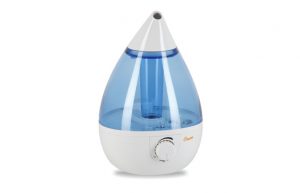
As I mentioned earlier, the popular and inexpensive Crane EE-5301 looks like a great deal at $40, but it scarcely changed the humidity level in our test area and lacks a hygrometer, so there’s no way to regulate the humidity in the room you’re using it in. Also, while its reservoir was easy to remove and fill, the handle on it is weak, so much so that the EE-5301’s manual recommends you not use it when the reservoir is full. So that’s lame.
To be certain I wasn’t wrong in my disdain for evaporative humidifiers, we tried out the $71 Vornado evaporative EVAP2. Unfortunately, we found that it was only able to increase the humidity in our test space by 8.80%. Richard also found that its reservoir was difficult to remove for refilling and difficult to clean, thanks an evaporative filter which needs to be cleaned every 12 hours. Also, like the Vornado Ultra1, the fan it uses to push moisture into the air is too loud to allow you to comfortably sleep in the same room with, or even watch TV without cranking up the volume. Richard described the noise it made as a high-pitched whine, like a car idling in a driveway outside of your house. No thank you.
Sunpentown’s SPT SU-2020 only costs $61. But it doesn’t have a hygrometer and only has a 2.5-gallon reservoir, so you’d have to fill it up more often than the 7135. And while we found that its operation was reasonably quiet, Richard reported an irritating dripping noise as excess water dripped back into the humidifier’s reservoir. I don’t think anyone wants to listen to that while they sleep. It also doesn’t have a warm mist function, which sucks if you’re using it in a cold room.
Consumer Reports gave the $60 Vicks V4500 a rating of 83 out 100, which puts it in the same neighborhood as the Air-O-Swiss 7135. But Richard found that it was noisy “like a faulty refrigerator; not overly loud, but you hear it and it’s kind of annoying.” Additionally, water collected on the bars that cover its vent, and just like the last few pieces of hardware I talked about, it lacks a hygrometer, and only has controls to manage its power and fan speeds.
We tried out two other Air-O-Swiss units too.
Air-O-Swiss’ 7147 costs about the same and has many of the same features as the 7135. But we didn’t like it as much because it used more water over our three-hour test than the 7135 did, was harder to refill and didn’t maintain our test area’s humidity as well.
The Air-O-Swiss 7133 is $20 cheaper than the 7135 and the Air-O-Swiss 7147, but it lacks a timer and and a hygrostat, and it doesn’t have a display to show you what you’re doing.
Keep it clean
Oh, one more thing: no matter which kind of humidifier you decide on you’ll have to pay for the comfort the hardware can bring to your life in the form of cleaning.
If you don’t keep your humidifier clean, it can become the perfect breeding ground for stuff you don’t want anyone you care about breathing like microbes, bacteria and Legionnaire’s Disease. How often you clean your humidifier depends on who you talk to.
The EPA says that you should clean your humidifier once every three days, but Dr. Cullen, whose background is in respiratory therapy, disagrees and warns that you should think about scrubbing yours out every day.
“Humidifiers are just so perfect for bacterial growth,” Dr. Cullen explains. “We teach and tell people to clean and scrub them out every day. Because where they make the mist, where the water is either made into a steam from the ultrasonic or where it hits the baffle to be made into droplets, that is where the bacteria grows.”
Dr. Cullen told me that in order to ensure that your humidifier is kept clean and safe, you should scrub its tank as well as any other hardware that comes into contact with water with a baby bottle brush and soap and water. She recommends Ivory dish soap because it’s cheap and doesn’t come loaded down with a harsh fragrance that could get spewed around your home later if you failed to rinse your humidifier out properly after cleaning it.
“Soap and water is really good,” says Dr. Cullen, “but even more important than soap and water is just physically scrubbing, just like you’d scrub a dish. You can put soap and water on a dish, but you see it’s not clean. Then, let it drip-dry on a dry towel. You don’t want to get too much lint from a paper towel or a cloth in there because where the humidifier is making the water into a vapor, there are tiny little holes, and you don’t want those to get too clogged up.”
What if you buy a humidifier with a built-in UV light or other microbe-fighting technology? Dr. Cullen says that you should still clean your hardware daily if you want to keep you and your family from breathing in any nasty of the nasty stuff that your humidifier’s capable of breeding. Better safe than sorry.
What to look for (types of humidifiers)
When looking for a pick, I came to realize there are two main types of humidifier: warm vapor and cool mist.
A warm vapor humidifier either boils the water in its reservoir and releases it as steam or gently heats it into a warm mist. They’re great for use in a cold room, as the heated mist won’t further lower the ambient temperature of an area like cool mist hardware can.
They often have a built-in medicine port so that you can vaporize medicines like Vick’s vapor rub, Kaz inhalant or scented oils into the air, so that’s cool if you’re into that sort of thing. A lot of people buy these things thinking that the warm mist they produce is better at breaking up the snot and phlegm that comes along with allergies, head colds and some flus. But that’s a myth, according to Dr. Deborah Cullen. She’s a professor and the Interim Chair, Family Health Dept., Director for Faculty Development & Advancement at the Indiana University School of Nursing. Dr. Cullen explains that while warm mist humidifiers were used in hospitals for respiratory therapy back in the 1970s, over time it was found that they offered no benefit over cool mist humidifiers.
“You really don’t need a heated mist at all,” says Cullen. “There’s no evidence to show that there’s an advantage to using a heated mist. The idea is that if you have heated water, it might make your mucus thinner, faster. But it doesn’t. The best thing for you to do is to just drink more water. This will cause the mucus to be thinner which will allow you to cough it up and blow your nose.” She also went on to explain that cool mist humidifiers vaporizers are actually a little bit better for children if they have a croup cough because the cool helps to vasoconstrict the blood vessels in the upper airway, which makes breathing easier.
It’s also worth mentioning that warm vapor humidifiers can pose a fire risk since they rely on electric heating elements to heat the water (especially in older hardware that doesn’t offer an auto-off feature) and they cost more energy to use. What’s more, some vaporizers create steam as opposed to a warm mist, and that can burn you. So they’re less than ideal for use in small areas or for anyone with little kids running around.
Basically, warm humidifiers are not the way to go, so let’s talk about cool mist hardware.
As their name implies, cool mist humidifiers pump cool moisture out into the area around them. There’s two dominant techs in cool mist humidifiers.
The first is evaporative.
Evaporative humidifiers work by drawing water from a reservoir up a to the top of a wick (which also acts as a filter for minerals in the water). The water is then drawn out of the wick by a fan and sprayed into a mist. Folks like these things because they’re cheap and efficient for humidifying small rooms. But they’re kind of loud because of the fan. Also the wick filter needs to be changed frequently, and that costs on average between $4 – $24 a pop every few weeks.
The second kind of cool mist humidifier is ultrasonic.
Ultrasonic humidifiers use high frequency sound to convert water from a reservoir into a fine mist. They’re the quietest humidifier around (and by far, the most popular on Amazon). They’ve got a few problems, though. You have to clean them more frequently than evaporative humidifiers or warm vapor models. Also, while they have no wick, many come with a cartridge that draws the minerals out of water. Others use a chemical treatment to stay the minerals. Both of these need to be replenished on a regular basis, and new cartridges cost on average between $9 and $20. You can go without these cartridges, but if you do, you’ll end up with ‘white dust’ all over your room—a consequence of the minerals in the water being separated from the water vapor by humidifier’s ultrasonics. This white mineral dust is harmless, but it’s a pain in the ass to have to clean up. Dr. Cullen mentioned to me that you could also opt to use distilled water, as the minerals in it have been removed. But this costs about $4/gallon at stores like Walmart or Walgreens, which is crazy, as many humidifiers can blow through three or four gallons in a 24-hour period. I say stick with the demineralization cartridges, as they’re way cheaper in the long run.
Ultrasonic humidifiers are best
After crunching the numbers, I found that a typical evaporative humidifier on Amazon and Home Depot ranges from $13 to $200 and an ultrasonic unit from Amazon or Home Depot ranges similarly between $40 to $236. But here’s the thing: low-end evaporative humidifiers aren’t worth considering. The majority of the cheap ones I looked at came with lousy user reviews and complaints that the hardware leaked. In many cases, they stopped working after a few months. It seems that a reliable evaporative humidifier costs as much as one of the cheapest low-end ultrasonic humidifiers Amazon sells—the Crane Drop Shape Cool Mist Humidifier—which is the most popular humidifier on Home Depot and Amazon.
What about the cost of consumables? Well, the price you’ll pay for a evaporative wick, demineralization tablets or cartridges looks to be pretty much even for both types of humidifiers. That’s not a deciding feature either.
In the end, it comes down to comfort and features. Both will humidify the area around them, but other things equal, an ultrasonic humidifier makes less noise, so that’s what we focused on in our search process.
Wrapping it up
After 100 hours of studying humidifiers, that’s what I know.
Honestly, because of the convenient features it offers, ease of use, set-it-and-forget-it functionality and the comfortable moist air you’ll get from buying one, I think you’ll be happy with an Air-O-Swiss 7135.
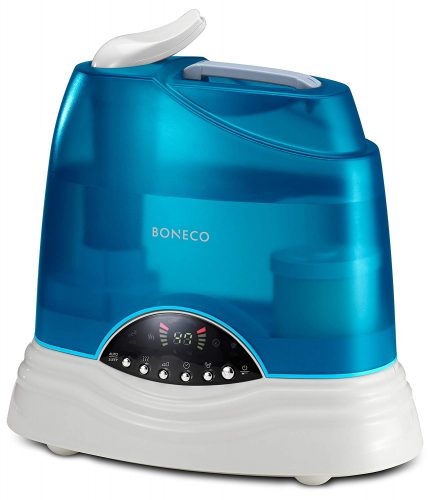





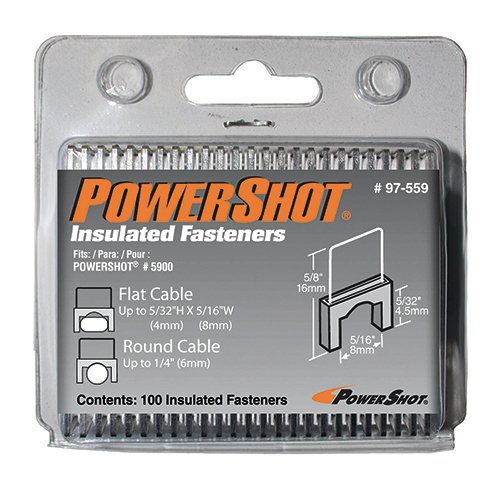

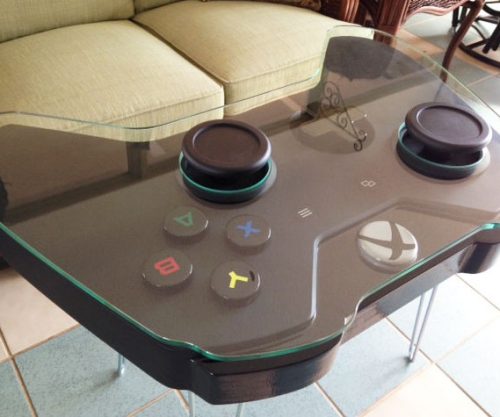
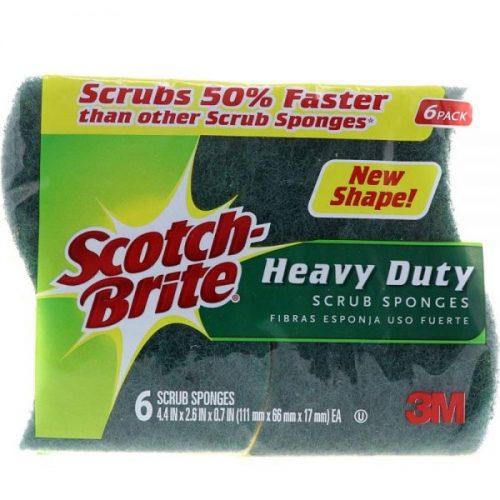
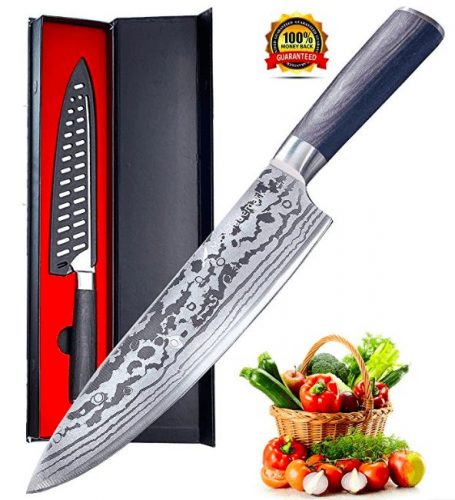

I bought the Air-O-Swiss based on this article and am having the problem of the built in hygrometer being inaccurate, which basically means the automatic shut off feature is useless since the humidity read by the unit never goes above 30%. There are multiple reviews on amazon.com of people having the same problem. Is this something you experienced in your testing?
After reading so many ‘useless’ and not so useless reviews across different stores i.e Amazon, Lowes, Home Depot; I came across iAllergy.com to my surprise the prices were really reasonable and they have the latest models available.
I decided to purchase Honeywell HCM-6011G QuietCare Cool Mist Humidifier it has great reviews across… and it covers a larger area in comparison with others.
I did find the study interesting, but not objective, “which sucks if you’re using it in a cold room.”
I think that it would be GREAT if you published the data you gathered, a part from your conclusions. The data would help other people to met other needs.
I felt that the article was written in a way that the author’s conclusions were clearly emphasized and they were finding reasons to enhance their conclusions.
One thing totally absent from this review is the maintenance costs. If
you buy Air-O-Swiss EZ Cal packets, replacement filter beads, and hydro
cell they recommend, this unit will set you back $13 per month (!) in
addition to the upfront cost. And don’t count on that number staying
constant either. I had an older Air-O-Swiss that used a $29.99
hydrostick requiring annual replacement. They discontinued that, and now
are charging $10 for the hydrocell that needs to be replaced every two
months. That’s right, they doubled the cost for regularly needed
replacement parts, and told me to take a hike when I requested a
discount as a loyal customer. Might be some good technology but their
treatment of customers leaves a lot to be desired.
Grеat post.